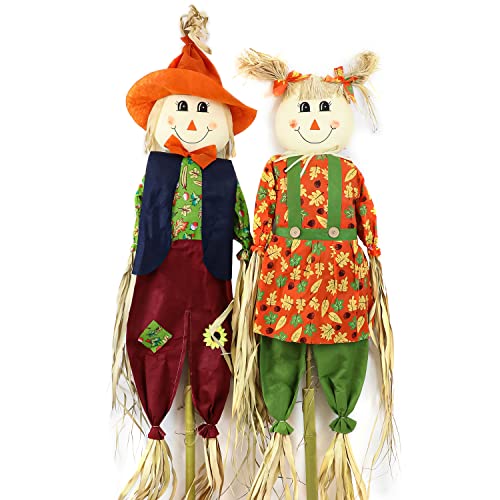The Purpose of a Scarecrow: Protecting Crops from Pests
A scarecrow is a common feature in many fields and gardens, standing tall and vigilant in the face of potential threats. But what is the purpose of a scarecrow? Why do farmers and gardeners spend time and effort creating these seemingly simple structures? The answer lies in a scarecrow’s ability to deter and scare away pests, protecting valuable crops from harm.
Deterrents and Scare Tactics
Scarecrows serve as a visual deterrent to pests that would otherwise feast on crops. These pests, such as birds, rabbits, deer, and even insects, are attracted to the crops for various reasons. Whether it is the sight of a tasty meal or a need for shelter, pests can cause significant damage if left unchecked.
With the presence of a scarecrow, these pests are more likely to be deterred or scared away. The sight of a scarecrow can create a sense of fear or danger, causing pests to seek safer and less threatening environments. The effectiveness of this scare tactic may vary depending on the type of pest, but for many, the sight of a scarecrow is enough to keep them at bay.
Protecting Crops and Harvests
A scarecrow’s purpose is ultimately to protect crops and ensure a successful harvest. Farmers and gardeners invest a significant amount of time, effort, and resources into growing crops, and a single infestation or attack can have devastating consequences. By keeping pests at bay, a scarecrow acts as the first line of defense, reducing the likelihood of damage to crops.
Additionally, a scarecrow can help minimize losses caused by pests. When pests are scared away or deterred from entering the field or garden, they are less likely to consume or damage crops. This not only allows for a better harvest but also helps to reduce the need for using harmful pesticides and chemicals to control pests.
A Symbol of Tradition and Folklore
While the primary purpose of a scarecrow is to protect crops, they also hold cultural and historical significance. Scarecrows have been a part of farming and gardening practices for centuries, rooted in tradition and folklore.
In many cultures, scarecrows are believed to have the power to ward off evil spirits or bring good luck to the land. They are often seen as guardians or protectors of the fields, entrusted with the task of keeping crops safe. Scarecrows have also been featured in various myths, legends, and children’s stories, further cementing their place in our cultural imagination.
Scarecrows in the Modern World
While scarecrows may be seen as a relic of the past, they continue to serve a practical purpose in modern agriculture and gardening. Despite advances in technology and pest control methods, the use of scarecrows remains relevant.
Today, scarecrows are often combined with other pest control methods, such as netting, sound deterrents, or motion-activated devices. These supplementary measures enhance the effectiveness of scarecrows, creating a comprehensive defense system for crops.
Furthermore, scarecrows have also found a place beyond traditional farming and gardening. They are often used as decorative features in rural areas, parks, and festivals, adding a touch of nostalgia and whimsy to the landscape.
The purpose of a scarecrow is far from simple. While its primary role is to protect crops from pests, scarecrows also hold cultural and historical significance. They act as a deterrent to pests, reducing damage to crops and the need for harmful pesticides. In addition, they symbolize tradition and folklore, connecting us to our agricultural heritage. Despite advances in technology, scarecrows continue to find a place in the modern world, serving as a reminder of the importance of protecting crops and preserving our connection to the land.






